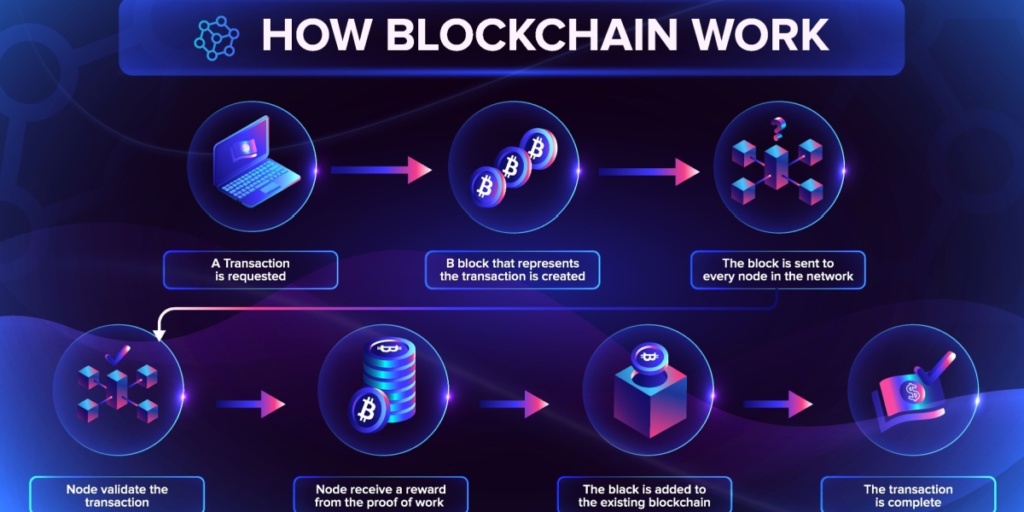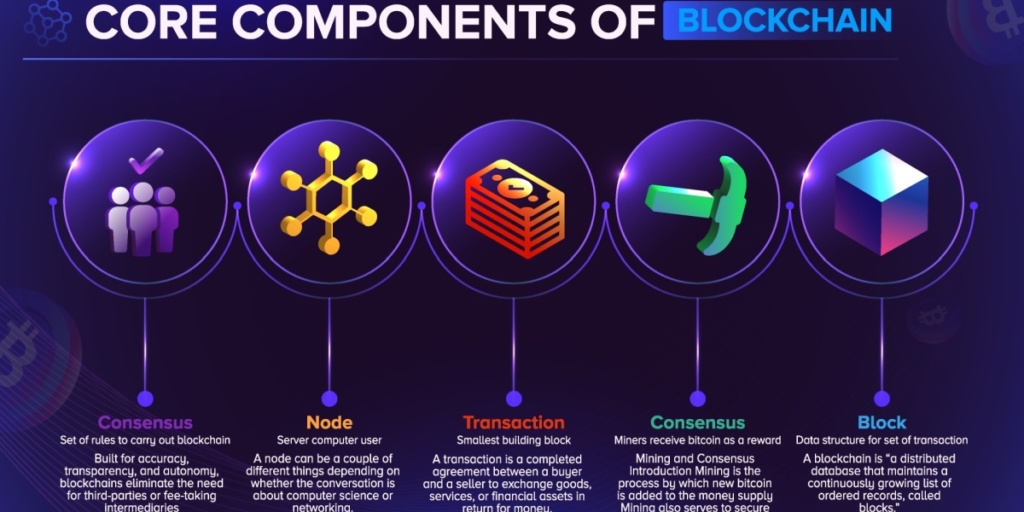A consensus mechanism in a blockchain network makes sure that everyone agrees on one version of the truth. Blockchains depend on consensus to verify transactions, keep the network safe, and keep trust without a central authority that people can trust.
A strong mechanism that provides simplicity, speed, and compliance is needed for a consensus crypto system to work. Consensus is the thing that makes decentralized systems work in the real world and be useful. Without it, smart contracts, data exchanges, and financial transactions would not be safe.
Join us in this blog as we explore the details of consensus mechanisms, including how they work, their advantages, the types of consensus mechanisms, and more. Let’s start to dive in!
How Does Consensus Work?
A consensus mechanism makes it possible for all nodes in the blockchain to check transactions and blocks using the same rules. This process makes it hard for bad people to change data.
Each consensus crypto protocol explains how participants come to an agreement and how disagreements are settled. The advantages are that everyone can see the same ledger and that it is very hard to change.
Algorithms decide which participant can add the next block in consensus models. This process makes sure that no one can spend the same money twice and that everyone can see the same record.
The deal can be made through computer work, owning tokens, or giving someone else the power to make decisions. In short, types of consensus mechanisms tell us how to build trust without centralization.
What Are the Advantages of the Consensus Mechanism?
The advantages of consensus mechanisms are important for making blockchain networks more reliable and efficient. They make sure the system stays fair and open while keeping users from being taken advantage of:
-
The main benefits are safety, decentralization, and fairness.
-
A strong consensus mechanism cuts down on fraud and stops single points of failure.
-
No matter if you choose proof of work, proof of stake, or another type of consensus mechanism, the outcome is trust across the network.
-
This clarity helps you run your business around the world while keeping costs down.
These benefits are why consensus crypto technology is the basis for most modern blockchain solutions. You can better choose which system meets your needs for simplicity, speed, and compliance if you understand them.
This means that businesses will have easier settlement processes, lower operational risks, and will be in line with global financial standards. For people, it means being sure that they can send and receive digital money without being concerned about fraud.
You can choose the best consensus mechanism that best fits your needs, whether you want it to be fast, use less energy, or be more decentralized. Jeton is right here to help if you need reliable tools for transactions that work across borders.
How Many Consensus Mechanisms Are There in the Blockchain?
Knowing how many consensus models there are helps you weigh the pros and cons of speed, security, and energy use. Each method fixes a different problem with keeping the blockchain trustworthy and efficient.
-
There are a lot of types of consensus mechanisms, and each one balances speed, energy use, and security.
-
There are many popular models, such as proof of work, proof of stake, proof of authority, and others.
-
There isn’t always one system that works best for reaching consensus. It depends on what the network needs.
-
Different tools are useful for different things.
The many different consensus crypto systems are a reflection of the many different uses of blockchain. You can pick the model that gives you simplicity, speed, and compliance once you know your options.
Some networks even try out hybrid models that mix the best parts of different systems. For instance, PoW might protect the first blocks while PoS takes over to make things bigger.
Others may use proof of authority, which means that only certain validators are allowed to work under strict rules. This shows that consensus is not set in stone but changes all the time to meet market needs.
Proof of Work (PoW)
Proof of work checks transactions by doing complicated math. It is very safe, but it uses a lot of energy. It was the first major blockchain system and ensures reliable security through mathematical effort but requires significant energy.
People compete to solve math problems, and the first person to do so gets to add the next block. This makes sure that everyone is treated fairly, but it uses a lot of electricity.
Bitcoin is still the most well-known example of PoW, and it shows both the good and bad sides of this method. For businesses that want stability, PoW shows how trust that is spread out can take the place of central authorities.
The effect of PoW on the environment, on the other hand, can’t be ignored. The more people who join, the harder it gets, which means more energy is needed. This makes us wonder if PoW will last in the long run. But it is still a standard for blockchain security and the basis for newer systems.

Proof of Stake (PoS)
Proof of stake chooses validators based on how many tokens they have. It uses less energy and lets processing happen more quickly. Wealth, trust, and not computing power determine who can validate transactions. This is why it’s one of the best ways to reach an agreement on eco-friendly blockchains.
PoS stops PoW from wasting energy by making people lock up tokens as a way to prove they are honest. The more tokens they put up, the better their chances of being chosen as validators.
If they are dishonest, they could lose their stake or have it lowered. This model promotes responsibility and productivity. PoS is very important for networks like Ethereum (after its upgrade) to grow so that everyone can use them.
One of the best things about PoS is that it is flexible. It lets you make changes like bonded staking, slashing penalties, and reward systems that change based on how the network is doing. These changes make things more stable while keeping them efficient.
PoS can help businesses by showing them how to make systems that connect trust and incentives with performance. Jeton helps you get the same level of efficiency in both cross-border payments and international payments.
Delegated Proof of Stake (DPoS)
Delegated proof of stake lets people who own tokens vote for trusted delegates. It works faster, but it is less decentralized. Having fewer validators means that confirmations happen faster, but the system is less decentralized. This consensus mechanism is meant to be able to grow.
In practice, DPoS gives communities more power by letting them choose who protects the network directly. The amount of tokens you own determines how much voting power you have, which means that stakeholders decide how the system is run.
It allows for very high transaction throughput, but it makes things less decentralized than PoW or PoS. DPoS is often preferred by networks that put user experience and performance first.
DPoS also shows how governance and consensus can work together. Delegates are responsible to voters, so systems change to meet the needs of the community. This flexible model teaches businesses and organizations how to balance efficiency with getting people involved.
Proof of Importance (PoI)
Proof of importance is more than just owning and using tokens. It gives participants a score based on how much they help the network as a whole, such as how many transactions they make, how often they interact with others, and how reliable they are.
Instead of just holding assets, this model rewards people who are actively involved. The good thing about this is that it encourages people to get involved in a meaningful way and lowers the chance of centralization.
Like other types of consensus mechanisms, PoI shows that trust can be built through actions, not just money. PoI is especially helpful for networks that want to grow by getting people to use them instead of just investing in them.
By rewarding real engagement, it makes an ecosystem that keeps going on its own, where activity creates value. This stops a small number of large token holders from having too much power. Jeton supports the same idea by making digital transactions clear and fair.
Proof of Capacity (PoC)
Proof of capacity doesn’t need a lot of processing power; it just needs storage space. Participants set aside disk space to store answers to cryptographic puzzles. The more space they set aside, the better their chances of validating transactions.
This uses less energy than proof of work while still being fair. The best thing about it is that anyone with extra hard drive space can help. This makes PoC a useful consensus mechanism for making networks more environmentally friendly.
PoC is inclusive because it lets regular people join in with simple tools. This makes it easier for more people to get in and gives more people the power to validate.
It also changes the focus from how hard the computer works to how resources are used, which many people think is better for the environment. Models like PoC show that sustainability and security can work together for global adoption.
Proof of Elapsed Time (PoET)
Proof of elapsed time makes sure that everyone has an equal chance by giving each participant a random wait time. The one who waits the least checks the next block. This model, which is often backed by reliable hardware, is efficient and uses little energy.
The benefit is that it is fast and fair without wasting too many resources. It is a consensus crypto model that strikes a balance between being easy to use and secure for permissioned blockchains.
Enterprise systems that need a lot of throughput and performance that can be counted on often prefer PoET. It can stay compliant while still being efficient because it uses trusted execution environments.
The benefit for businesses is clear: a fair, low-cost consensus that is easy to predict. It connects the ideas behind open blockchains with the rules that must be followed in regulated environments.

Proof of Activity (PoA)
This hybrid model strikes a balance between fairness and energy use. It has the best parts of older systems and is both safe and efficient.
- It uses the ideas from proof of work and proof of stake.
- It begins with miners solving puzzles and then moves on to stakers checking blocks.
PoW makes proof of activity safe, and PoS makes it work better. It shows how different types of consensus mechanisms can be used together to make solutions that are specific to a problem. The main benefit is that it can adapt to the needs of the network while still being safe and fast. This shows that blending models can sometimes work in the real world.
PoA also shows how blockchain can grow beyond strict systems. By bringing together strengths, it lowers weaknesses and shows the way to the best consensus mechanism. The lesson for businesses is to be flexible: in environments that change quickly, hybrid approaches often work better than rigid models.
Proof of Authority (PoA)
Proof of authority depends on validators who are given clear authority to approve transactions. These validators are usually well-known people or organizations that follow strict rules.
The advantage is that it works very quickly and efficiently, but it is less decentralized. PoA is often used in private or business blockchains that need to follow rules and have predictable performance. This makes it a good choice for businesses that want the best way to reach a consensus in controlled settings.
PoA is strong because it is easy to predict. There are only a few validators, so transactions happen quickly, and a lot of them happen. But since validators are known, it gives up anonymity in order to follow the rules.
In business settings where accountability is very important, this trade-off is fine. It shows how consensus can be changed to fit the needs of businesses and the law.
Proof of Burn (PoB)
Proof of Burn lowers the amount of coins in circulation and makes sure that validators have a stake in the network’s future. It is different because it asks participants to give up tokens to show that they are committed.
- Participants show their commitment by “burning” coins, which means sending them to addresses that can’t be used.
- Burned tokens show that you have invested and are interested in the long term.
The benefit is that it aligns incentives with long-term goals. PoB is an innovative way to reach consensus because it doesn’t require expensive hardware or large amounts of tokens. It encourages loyalty and stability in some situations.
This creative method shows that networks can be fair without using too many resources. PoB shows that making a commitment makes you more trustworthy. Participants show their long-term interest by permanently destroying tokens.
This lowers speculation and encourages loyalty, which makes it appealing to networks that want to grow in a sustainable way. For businesses, the lesson is clear: real investment is what creates long-term value, not quick profits.
Jeton, like PoB, builds long-term trust by offering clear, fast, and compliant services for global finance.
What Is the Best Consensus Mechanism in Blockchain?
Your goals will help you choose the best consensus mechanism. Proof of Work is good for public networks because it makes them safer, and proof of stake is good for private networks because it makes them faster.
Proof of activity is an example of a hybrid model that brings together different features to make things work. The most important thing is to know the pros and cons of energy, decentralization, and compliance. In short, there is no one system that works for everyone, but every consensus crypto model helps to make blockchain better.
As new models come out, the search for the best consensus mechanism goes on. Researchers and developers are always working on ways to make algorithms more scalable, less harmful to the environment, and fairer.
This process makes sure that consensus keeps up with the growing needs of people who want to use blockchain around the world. You can make choices that are in line with both technical needs and strategic goals by studying these mechanisms. You should choose based on clarity, speed, and compliance.
Wrapping Up
Consensus mechanisms form the backbone of blockchain technology, allowing decentralized networks to operate securely, transparently, and efficiently without needing a central authority.
Whether it’s proof of work, proof of stake, or emerging hybrid designs, each model has its own approach to validating transactions and preventing fraud. As these systems evolve, they continue shaping the future of digital finance by making global transactions faster, safer, and more accessible.
In this rapidly growing ecosystem, platforms like Jeton offer a practical bridge between traditional finance and blockchain-driven innovation.
- With Jeton Wallet, you can manage your digital funds with ease.
- With Jeton Card, you can bring your digital spending into everyday life.
- With the Jeton app, you gain secure, seamless access to modern financial tools.
Understanding how consensus mechanisms work empowers you to navigate this new era with confidence—and Jeton helps you do it securely, efficiently, and globally. Download the Jeton app via the App Store or Google Play and sign up for one app for all needs today!



